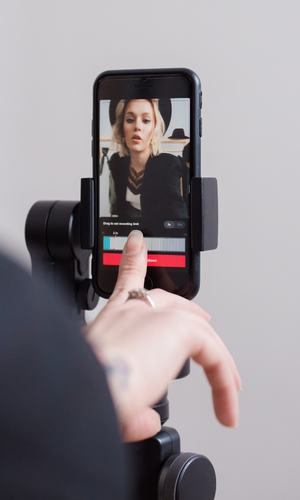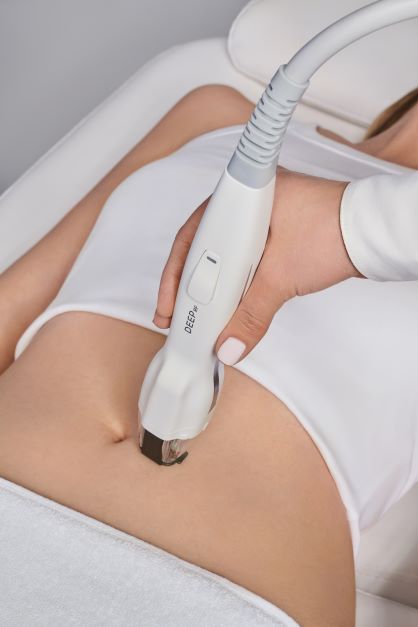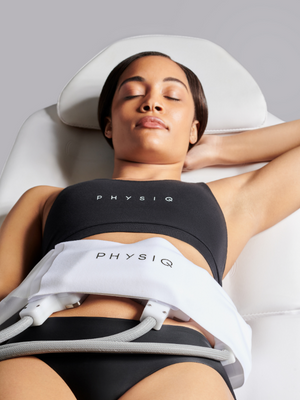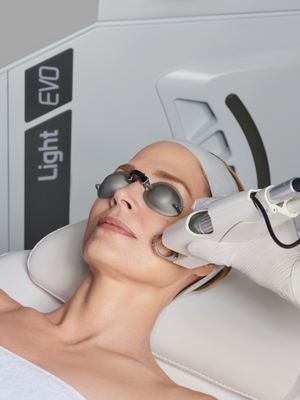Top Aesthetics Trends to Watch in 2023
If we learned anything in the last three years, it’s that the demand for aesthetic treatments is pandemic proof. In fact, the aesthetics medicine market grew from 2020 to 2021 and is estimated to continue growing at a CAGR of 13.1% from 2022 to 2030.
Several drivers helped fuel the aesthetics business during the past few years: constant video calls making us hyper aware of our looks, work-from-home negating the inconvenience of procedures with downtime, increased awareness and decreased taboos around cosmetic procedures, and more disposable income from lack of usual activities such as traveling and dining out. AND don’t underestimate the impact of the ever-expanding variety of aesthetics procedures.
So, what will be shaping the aesthetics category in 2023? Our experts weigh in on the seven trends you’ll want to watch for this year.
1. Growing Influence of TikTok
Social media has had a significant impact on the aesthetic industry and aesthetics trends (the Kardashian-Jenners, anyone?). The latest research from the American Society of Dermatological Surgery (ASDS) shows that social media is the number two factor in buying decisions for skincare products and the number three factor in decisions to have a cosmetic treatment (number one influence is the dermatologist!).
While Instagram remains influential, as TikTok gained prominence and gathered more users over the past couple of years, we’re starting to see TikTok play a bigger role in driving trends in aesthetic treatments.
One benefit of TikTok (and all social platforms for that matter) is the normalization of aesthetic treatments and even cosmetic surgery, removing some of the stigma traditionally associated with such treatments and sharing helpful information and personal journeys for potential patients. For example, one of the most popular procedures on TikTok is rhinoplasty, with many patients sharing their recovery journey and final result. Another treatment popularized by TikTok is the lip flip, with the hashtag #lipflip garnering millions of views.
As with any social media network, misinformation can proliferate as well, making it that much more important to position oneself as a trusted expert that listens to the “social chatter” and provides transparent information.

How can your practice harness TikTok’s powers for good?
Follow TikTok to understand trending treatments and what your patients may be looking for. Make sure your staff is prepared to answer questions and offer treatment options in response to patients’ potential inquiries on those procedures. But most importantly, educate your patients and set expectations, helping them understand the procedure in real life as opposed to what they may see online. In addition, TikTok is not just a platform for the kids! Tap into TikTok to market your practice; use this platform to spread educational content that is transparent and realistic to help your practice build influence and credibility.
2. Inclusion Takes Center Stage
In 2010, nine million Americans identified with two or more races. By 2020, that number has more than tripled to over 33 million. As the population grows more diverse, the aesthetics industry needs to catch up. From doctors who are not trained to treat skin of color, to lack of energy-based devices that treat all skin types, to unconscious biases that exist amongst practice staff – a large and growing portion of the patient population will continue to feel unwelcome or underserved in aesthetics unless the industry evolves with the demographics. In 2023, inclusivity will take even more prominence in conversations.
First, representation matters and starts with providers. In late 2022, the American Society of Plastic Surgeons appointed its first ever African American President Elect. As the largest plastic surgery specialty organization in the world, this highly visible position will have a definitive impact on our industry. New president Dr. Steven Williams stated his mission is to ensure the organization is moving to meet the needs of all patient populations, including those who felt underserved in the past.
Second, the way we look at skin of color is also shifting. Many aesthetic experts are recognizing the limitations of the Fitzpatrick scale and its skew towards non-ethnic skin. As such, more providers are incorporating the Lancer Ancestry Scale, which utilizes the patient’s heritage and genetic ancestry to understand if a patient is suitable for specific treatments. (Beyond the industry, even Google is transitioning from the Fitzpatrick scale to a new skin typing scale to better represent people of color).
Finally, thanks to technological advances, there no longer has to be a trade-off between efficacy and safety for darker skin tones. However, it’s important for providers who want to stay ahead of the curve to continually educate themselves on skin of color and master the right protocols to address the needs of their patients.
What steps can your practice take?
As the population continues to grow more diverse and multi-racial, it’s important for providers to understand the nuances of treating skin of color and what technologies and protocols are appropriate. Committed to “(Sk)inclusive” aesthetics, Cartessa is constantly working to bring on more technology that can treat the broadest patient population possible and address the specific concerns of patients with skin of color. From the Motus, which revolutionized laser-hair removal for all skin types, to VirtueRF, the most versatile RF microneedling platform on the market – our technologies have your patients covered. Speak to your Cartessa representative to learn more about our (Sk)inclusive technologies and trainings.
3. New Applications for RF Microneedling
Microneedling has long been a favorite of patients and providers for treating wrinkles, uneven skin texture, sun damage, and even acne scars. The first documented use case of microneedling actually dates back to 1905, although some reports say that forms of microneedling were used thousands of years ago! However, modern microneedling devices as we know them were first popularized in the late 1990s.
In more recent years, RF microneedling (RFMN) has become the more popular variant of microneedling, and a go-to procedure amongst celebrities. In addition to puncturing the skin to create micro wounds, RF microneedling delivers radiofrequency energy directly into the dermis once the needles penetrate, further stimulating collagen and elastin production. Another benefit is that energy is delivered deep into the dermis and bypasses the epidermis, making the technology suitable for all skin types (see trend #2!).

As RF microneedling technologies continue to evolve, we expect to see more novel applications of this proven technology. Some of these applications include treating skin with active acne and reducing the size of sebaceous glands, stacking RF depths, and combining with other modalities such as CO2 lasers and contouring devices.
The areas that can be treated with RF microneedling are also expanding. While traditionally used for facial rejuvenation, new technologies allow providers to treat other areas of the body. Doctors have found RF microneedling to have a beneficial effect on tightening around the neck and jowl, historically difficult for non-invasive treatments. Deeper applications of RF microneedling can also be used to target fat in addition to skin tightening, beneficial for larger body areas such as the stomach, thighs (where cellulite is prevalent), and above the knees.
How can you stay ahead of the RFMN game?
RF microneedling is here to stay, and providers who want to stay ahead must tap into versatile technology to expand their treatment options. VirtueRF is the world’s first RF microneedling platform with three FDA-approved handpieces for a variety of treatment applications. The SmartRF handpiece provides comfortable treatments of the face, hands and decollete, the ExactRF handpiece helps provide targeted treatments around the eyes, mouth, and jawline, while the DeepRF handpiece provides tightening, smoothing, and advanced body treatments.
It’s also important to consider patient experience when performing an RFMN treatment. While some devices tout “no pain, no gain” – prioritizing patient comfort can help your practice earn repeat customers. VirtueRF’s unique energy delivery, motorized handpiece design, and post-care make treatments much more comfortable for the patient, while still delivering exceptional results.
4. Customers are Getting Younger (& Looking for “Prejuvenation”)
As the aesthetic business boomed during the pandemic, the patient population has evolved. The most recent report from the American Academy of Facial Plastic and Reconstructive Surgery (AAFPRS) showed that patients aged 56 and older represent a lower percentage of overall procedures versus previous years. Research also shows that the average age of a Botox user is about 25 years old.
While aesthetics may have traditionally conjured up images of mommy makeovers or dramatic face lifts, patients are getting younger and opting for more non-invasive and preventative procedures. For younger patients like millennials, not only did they grow up in the social media spotlight with a hyper focus on appearance (trend #1), they feel that their overall appearance can impact how successful they are in life (personally and professionally). As a result, aesthetics is seen as a part of their broader lifestyle. This generation is also doing more research – especially online – and more open to transparent conversations about aesthetic treatments.
This practice of younger patients opting for preventative treatments is often called “prejuvenation” – treating the skin to slow down and delay aging, as opposed to correcting major signs of aging that are already present. The range of treatments that fall within prejuvenation can be broad. One of the most popular approaches is using neurotoxins like Botox to prevent wrinkle formation (versus freezing existing wrinkles). Many are opting for the increasingly popular “Baby Botox” treatment, which is a smaller amount of Botox that retains muscle movement, looks more natural, and serves a preventative purpose.
With minimal downtime, other popular “prejuvenation” treatments include the popular superficial CO2 treatment CoolPeel®, RF microneedling, stem cell injections, and PRP (platelet-rich plasma) – anything that slows down the collagen breakdown.
Is your practice catering to younger clientele?
As mentioned before, the younger patient is much more well-researched when pursuing aesthetic treatments, looking to articles, feedback from peers, and social media for information. With this younger demographic, it’s important that marketing is educational and transparent and menu of services holistic. It’s important not just to have solutions that target specific concerns, but also technologies that fit together as part of an ongoing skin wellness regimen.
5. Body Contouring Remains Strong
Although there was a boom in facial plastic surgery in 2020 and 2021, body contouring bounced back in 2022 and is stronger than ever going into 2023. According to the International Society of Aesthetic Plastic Surgery (ISAPS), liposuction has now overtaken breast augmentation as the world’s most popular cosmetic surgery.
Outside of liposuction, body contouring also includes minimally invasive and non-invasive treatments. Minimally invasive body contouring includes energy-based lipolysis or liposuction, such as laser-, ultrasound-, and RF-assisted lipolysis. This is a category that has seen very little innovation over the past decade until very recently, with the launch of LipoAI.
More and more, patients expect non-invasive treatments to still deliver exceptional results while minimizing pain, downtime, and any disruption to their daily life. As a result, we’re seeing the bulk of the innovation in body contouring in the non-invasive space, where a variety of treatments aim to target either tissue and fat, muscle, or both. A leading trend in the non-invasive space that will continue into 2023 is the rise of multi-modality technologies that target multiple layers of the body within one device. These technologies will treat the different layers of the body to achieve superior results.
Physicians are also combining modalities with two or more devices and crafting unique protocols to optimize and tailor outcomes. Some providers use biostimulatory injectables that reduce fat with cryolypolisis or an energy-based technology. Another combination rising in popularity is RF microneedling with an energy-based device to add skin tightening to body contouring results.
Are you equipped with standout body technology?
With body treatments in high demand, the right technology can help your practice stand out from the crowd. PHYSIQ is a customizable, multi-modality non-invasive body treatment that targets both tissue and muscle in one session. PHYSIQ’s innovative technology won the 2022 NewBeauty Award for Best Innovations and Good Housekeeping Best Beauty Award. PHYSIQ works well in combination with RF microneedling; many clinicians are developing combination protocols that provide a total body transformation that address volume, muscle, and skin laxity.
For plastic surgeons looking for the latest in minimally-invasive body contouring, LipoAI is the newest innovation from DEKA and the next generation of laser-assisted lipolysis. In addition to having a more targeted and precise laser technology, LipoAI is the only intelligent body contouring device on the market, utilizing artificial intelligence to optimize energy delivery in response to the surgeon’s movements.

6. New Biologics & Advancements in Regenerative Aesthetics
Regenerative treatments leverage existing biological functions within our body and are thought to work at a cellular level to regenerate or engineer new cells or tissue. In the world of aesthetics, this is often used to promote wound healing or skin rejuvenation but is also used to promote hair growth.
The regenerative treatment you may be most familiar with is PRP – or platelet-rich plasma – therapy, which has become mainstream. PRP therapy injects the patient’s own plasma in the treatment area to promote the release of growth factors, induce healing processes, or provide anti-aging benefits. One of the most popular use cases of PRP these days is hair loss, where the growth factors are shown to increase activity at the hair follicles and promote new hair growth.
Another field that has developed tremendously in recent years is stem cell therapy. Stem cells have the power to self-renew and propagate other cells, creating a rejuvenating effect. Adipose-derived stem cells have become especially popular for aesthetic applications, given their abundance and ease of collection. Stem cells can be processed and injected into the skin, but they’re also available in topical skincare products, such as AnteAge’s popular Growth Factor Solutions products.
The next big trend to watch in regenerative medicine is the utilization of exosomes, which are derived from stem cells. Exosomes are understood to be the key to communication between cells, carrying signals from cell to cell, such as a healthy cell signaling an unhealthy cell to regenerate. Early research shows exosomes may be even more effective at rejuvenation and regeneration than stem cells. In addition, exosomes may have applications for skin conditions such as alopecia.
Exosomes were highlighted recently at both the International Facial Plastic Surgery Symposium and the American Society for Dermatologic Surgery meeting. While more research remains to be done, industry experts predict we’ll be seeing much more on this topic in 2023.
More to come on exosomes?
The field of regenerative aesthetics will continue to grow in popularity thanks to the minimally invasive (or even topical!) treatments and impressive results. As a developing field, it’s important to make sure you understand the regulations and are performing treatments in a safe manner. Do not fall victim to trends – do your own research, read published and credited papers, follow FDA guidance and regulations, and constantly educate yourself and your patients.
7. Optimizing Results with Novel Combinations
In the past few years, combination treatments have been growing in popularity as a means to achieve even better results with non-invasive treatments. Research shows the aesthetics combination therapy market growing at a CAGR of 8.2% from 2022-2030. Moving into 2023, we see combining treatments as the norm, not the exception, to creating the best protocol to maximize outcomes in each patient.

Many thought leaders in aesthetics are leveraging new wavelengths and technologies to create novel combination treatments. By combining different laser wavelengths, providers can target different chromophores to address multiple concerns, such as wrinkles, scars, and pigmentation. Providers can also combine ablative with non-ablative lasers to induce skin rejuvenation at multiple levels. With all these innovative techniques in practice, new laser technologies are here to keep up.
The latest crop of advanced platform devices target multiple concerns in isolation while offering ways to layer wavelengths to address multiple concerns in a single session. Don’t overlook these work-horse stations as many have unique capabilities and exponential possibilities. Practices are consolidating their portfolio to bring in a single device that does more, which allows them to deliver the best results for their patients and the best ROI by freeing up cashflow and space.
Beyond combining wavelengths, lasers can serve other functions in combination treatments. Laser-assisted drug delivery is a field that continues to evolve and expand in use cases. By pre-treating with a fractional ablative CO2 or erbium laser, the microchannels opened by the laser provide pathways for the application of topical products, which can then more effectively penetrate the skin. This methodology continues to gain momentum in aesthetics and dermatology, with more and more beneficial applications to come.
Which winning combinations should you add to your practice menu?
In 2023, have your devices do the work for you. The Chrome lase station is the only multiwavelength platform with NanoFrax technology and dedicated patient-centric Skin Apps. In addition to significant advancements in Q-switched laser technology, Chrome’s combination of laser wavelengths yields over 50 different treatment protocols to address your patient population.
Another exciting new protocol is the MoveoGlo, performed on the Motus AZ+. The revolutionary Moveo technology by DEKA uses simple, continuous movements over a small area gradually delivering a precise dosage of energy to the targeted tissue without damaging the surrounding skin. Motus was made popular because of its pain-free alexandrite for hair removal. Now, with additional handpieces also utilizing Moveo technology, you can combine pigmented & vascular lesion reduction with skin revitalization in a single, no-downtime session.

